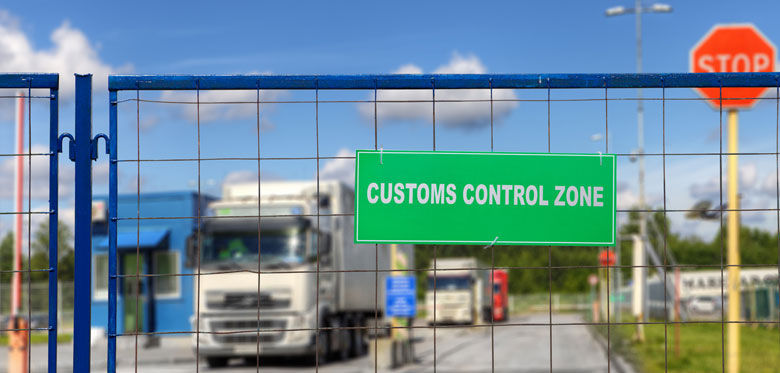In August 2023 the Secretary of State for Cabinet Office presented to Parliament a new Border Target Operating Model (BTOM). The BTOM applies to all imports into Great Britain, including imports from the EU.
The purpose of the BTOM is to balance the need for effective border controls with the need to support businesses with import processes, to ensure it is as simple as possible. There were over 10,000 registrations for workshops and seminars during the engagement period and more than 200 stakeholders provided written feedback.
The new model will be implemented from January 2024 onwards, beginning with the introduction of health certification on relevant EU goods. The BTOM states it will:
- “reduce the Safety and Security data requirements down from the current 37-field dataset to 20 mandatory fields. There are also up to 8 conditional fields, which may need to be completed in certain circumstances. The remaining 9 fields will be optional;
- make it easier to submit Safety and Security data through the UK Single Trade Window;
- improve the use of data by the UK Government to remove duplication (for example by allowing the use of Transit Security Accompanying Documents in place of separate Safety and Security and Transit declarations).
- remove Safety and Security requirements for the following categories of movement: certain outbound freeport goods leaving Great Britain, outbound transit for Great Britain and fish from UK waters landed in non-UK ports.”
The model will be implemented through three key stages:
“31 January 2024 - The introduction of health certification on imports of medium risk animal products, plants, plant products and high risk food and feed of non-animal origin from the EU. The removal of pre notification requirements for low risk plant and plant products from the EU.
30 April 2024 - The introduction of documentary and risk-based identity and physical checks on medium risk animal products, plants, plant products and high risk food and feed of non-animal origin from the EU. Existing inspections of high risk plants/plant products from the EU will move from destination to Border Control Posts. We will also begin to simplify imports from non-EU countries. This will include, the removal of health certification and routine checks on low risk animal products, plants, plant products from non-EU countries as well as reduction in physical and identity check levels on medium-risk animal products from non-EU countries.
31 October 2024 - The requirement for Safety and Security declarations for imports into Great Britain from the EU or from other territories where the waiver applies will come into force from 31 October 2024 as set out in the original Target Operating Model. Alongside this, we will introduce a reduced dataset for imports and use of the UK Single Trade Window will remove duplication where possible across different pre-arrival datasets – such as pre‑lodged customs declarations.”
Some of the key changes surround the importing of live animals, germinal products, products of animal origin and animal by-products. These goods will be categorised as high risk, medium risk, or low risk. The levels of control imposed will be determined by their categorised risk level. The risk level is determined by Defra, the Food Standards Agency, Food Standards Scotland and developed counterparts and the risk categories have been published and can be found here.
If an import is categorised as high risk, they will require pre-notification, simplified health certificates, documentary checks and identity and physical checks at the border. If classed as a medium risk, the import will require pre-notification, simplified health certificates, documentary checks and be subject to risk-based identity and physical checks at the border. However, if low risk, there will be minimal border controls applied. There will be no requirement for health certification or routine physical border checks. There will however, be provision for intelligence-led intervention on low risk products and the goods will still need to enter via a port that has a Border Control Post designated for that type of commodity.
Therefore, the aim is to adopt a risk-based approach where routine checks take place for higher risk goods and are removed where possible for lower risk goods.
What is being introduced on 31 January 2024?
From 31 January 2024, simplified export health certificates and phytosanitary certificates will be introduced for medium risk animal products and phytosanitary goods imported from the EU. Sample documentary checks will also begin on medium risk goods from the EU. Further, pre-notification requirements will be removed for low-risk plant and plant products from the EU. Pre-notification requirements will be introduced for EU sanitary and phytosanitary goods entering Great Britain via West Coast Ports.
The new simplified health certificates have been published and can be found here.
Whilst the aim of the new Border Target Operating Model is to simplify the processes for businesses importing goods to Great Britain, the introduction of new requirements and changes to existing requirements for importing goods will likely result in an initial increase in the number of imports being stopped and subsequently seized by UK Border Force and HM Revenue and Customs (HMRC), as businesses adapt to the new requirements.
Stephensons has a team of specialist regulatory lawyers who provide advice and representation to business owners and individuals, nationally and internationally, in relation to the seizure of goods by Border Force and HMRC. Contact our team today on 0161 696 6250.
Full details of the new Border Target Operating Model can be found here.




Comments